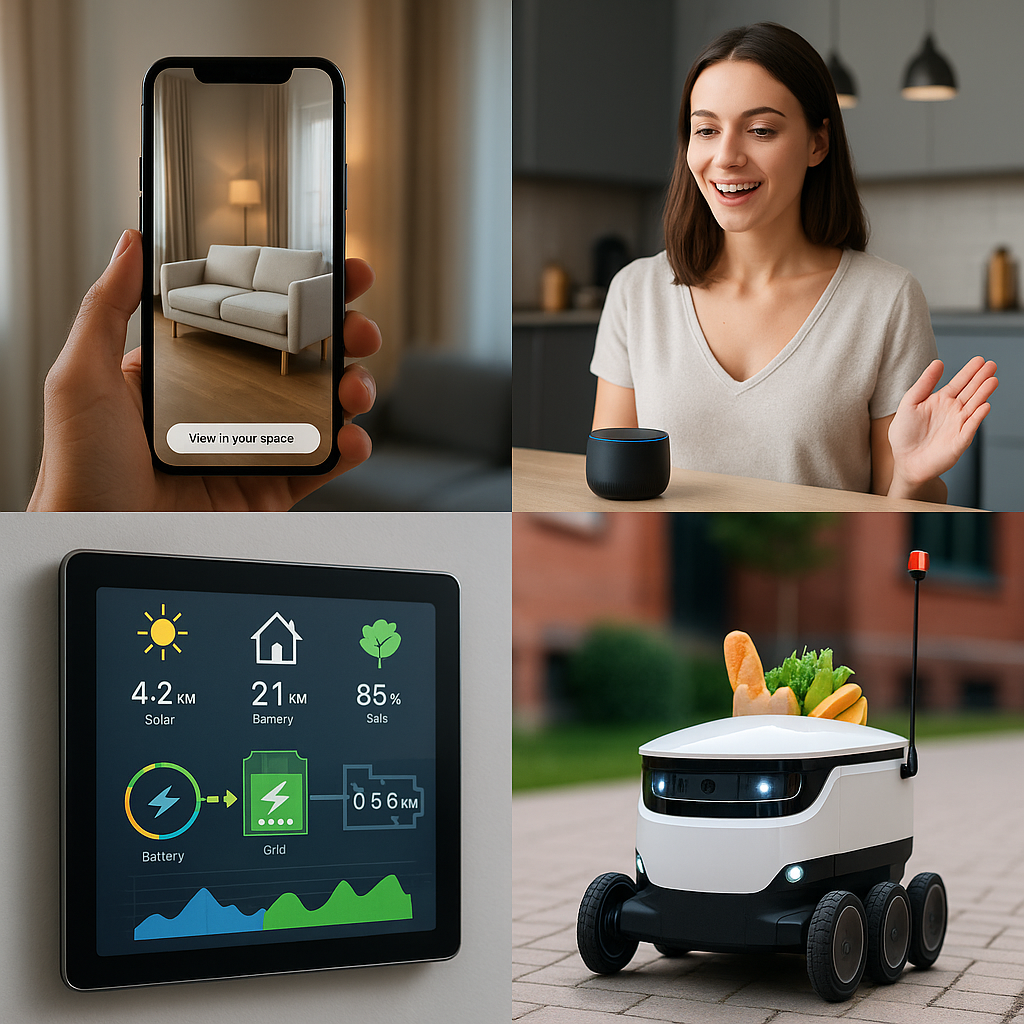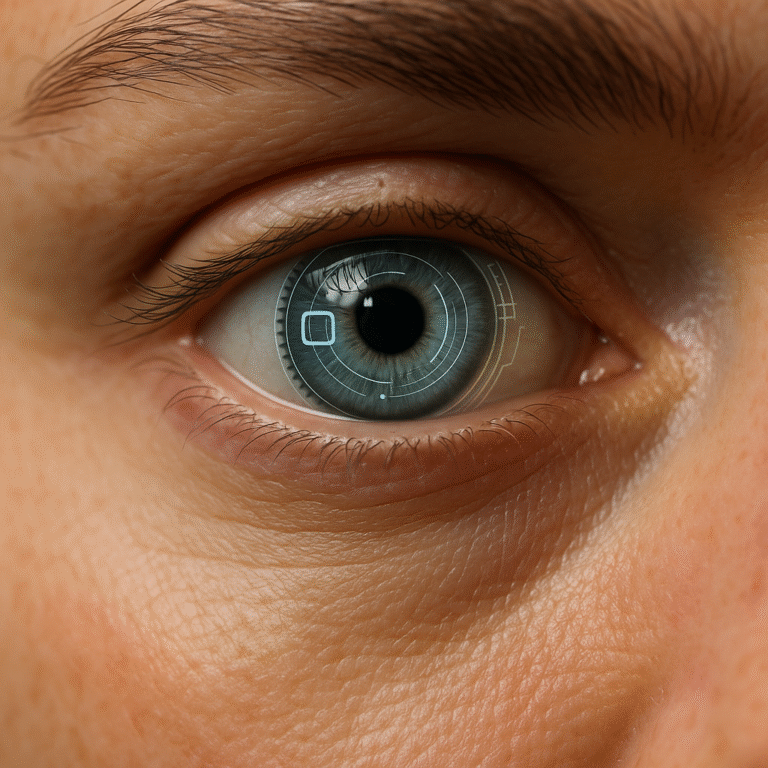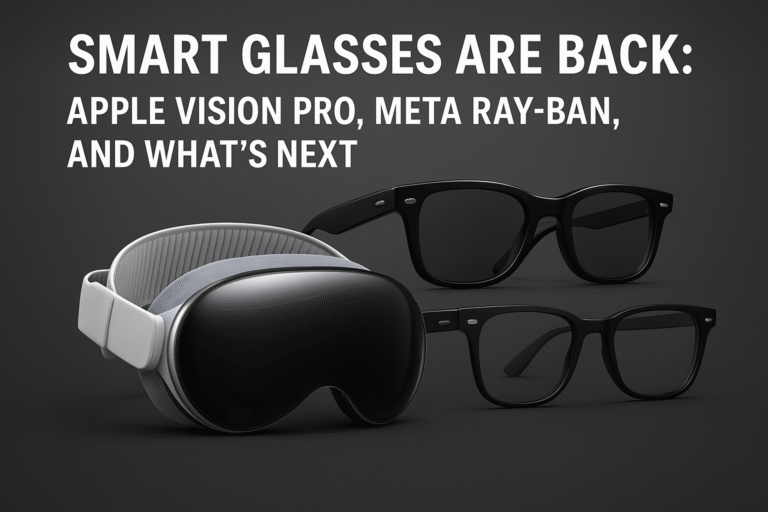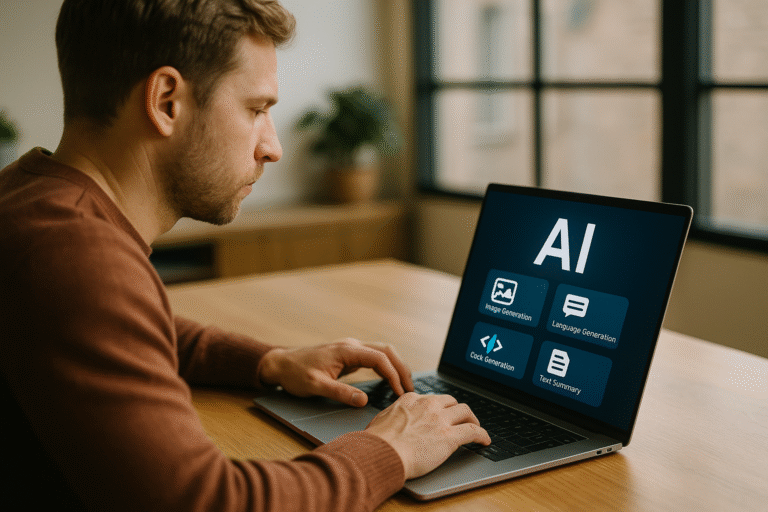-
1
Top 10 Tech Innovations That Will Transform Daily Life in 2025
- 1.1 Table of Contents
- 1.2 Introduction: Welcome to the Future
- 1.3 AI-Powered Personal Assistants 2.0
- 1.4 Smart Home Ecosystems with Matter Protocol
- 1.5 Augmented Reality Shopping
- 1.6 AI Health Monitors & Predictive Diagnostics
- 1.7 Autonomous Delivery Robots
- 1.8 Brain-Computer Interfaces (BCIs)
- 1.9 Clean Energy Home Solutions
- 1.10 Wearable AI Companions
- 1.11 Voice-Controlled Everything
- 1.12 Quantum-Enhanced Cybersecurity
- 1.13 What This Means for Your Daily Life
- 1.14 Comparison Table of the 10 Innovations
-
1.15
❓ Frequently Asked Questions (FAQ)
- 1.15.1 Q1: Are these technologies only for tech-savvy users?
- 1.15.2 Q2: Which innovation offers the fastest return on investment?
- 1.15.3 Q3: How secure are these innovations with regard to privacy?
- 1.15.4 Q4: Will these technologies become cheaper over time?
- 1.15.5 Q5: How soon will Brain-Computer Interfaces be mainstream?
- 1.15.6 Q6: Can these technologies be integrated together?
- 1.15.7 Q7: What if I live in a rural or under-connected area?
Top 10 Tech Innovations That Will Transform Daily Life in 2025
Table of Contents
- Introduction: Welcome to the Future
- 1. AI-Powered Personal Assistants 2.0
- 2. Smart Home Ecosystems with Matter Protocol
- 3. Augmented Reality Shopping
- 4. AI Health Monitors & Predictive Diagnostics
- 5. Autonomous Delivery Robots
- 6. Brain-Computer Interfaces (BCIs)
- 7. Clean Energy Home Solutions
- 8. Wearable AI Companions
- 9. Voice-Controlled Everything
- 10. Quantum-Enhanced Cybersecurity
- Comparison Table of the 10 Innovations
- Frequently Asked Questions
- What This Means for Your Daily Life
Introduction: Welcome to the Future
The year 2025 is no longer a distant vision—it’s the new reality we wake up to every day. While we might not have flying cars or humanoid robots cleaning our homes just yet, the technologies we once saw in sci-fi are now quietly becoming part of everyday life. From AI assistants who know us better than our friends to health trackers that can detect diseases before symptoms appear, innovation is no longer a buzzword—it’s embedded in how we live, work, and connect.
Advancements in artificial intelligence, connectivity, energy, and interface design power this rapid evolution. These aren’t just flashy gadgets—they’re tools built to solve real problems and simplify daily routines. Whether it’s reducing your energy bill, managing your schedule more intelligently, or ensuring your groceries arrive via robot, the future is increasingly personalized and frictionless. In this article, we’ll explore ten cutting-edge tech innovations that are already reshaping how we interact with the world—and how they can make your life easier, healthier, and more connected.
Let’s take a deep dive into the tools and trends that are defining 2025. Some of these you might already use without even realizing it, while others are poised to go mainstream by year’s end. Either way, being informed about these innovations puts you ahead of the curve—and gives you a chance to take full advantage of what this exciting new era has to offer.
AI-Powered Personal Assistants 2.0
Forget basic voice commands—2025’s AI assistants are autonomous, predictive, and emotionally intelligent. Tools like xAI’s Grok, GPT-5-based personal agents, and OpenAI’s custom GPTs are designed to function more like digital employees than mere assistants. These tools can schedule meetings, summarize emails, prioritize to-do lists, generate documents, and even book appointments—all while adapting to your communication style and daily habits.
🔍 Use Case: Your AI wakes you, recaps your calendar, recommends what to wear based on weather and events, and even orders your preferred lunch before noon—without a single prompt.
What sets this new generation apart is their ability to reason and anticipate needs. Instead of waiting for your instructions, they learn from patterns and act proactively. If you often cancel Monday meetings, the assistant might begin blocking that time for deep work or rest. If you struggle to keep up with emails, it can summarize threads, draft replies in your tone, and filter out distractions—all while syncing across your devices in real-time.
Additionally, these AI assistants now integrate with dozens of everyday apps—Slack, Notion, Google Calendar, Zoom, WhatsApp, Spotify, and more—creating a seamless experience across platforms. The assistant becomes your digital brain, helping you optimize time, reduce stress, and stay on top of both your professional and personal life. For freelancers, remote teams, busy parents, and entrepreneurs, this isn’t just a convenience—it’s a life upgrade.
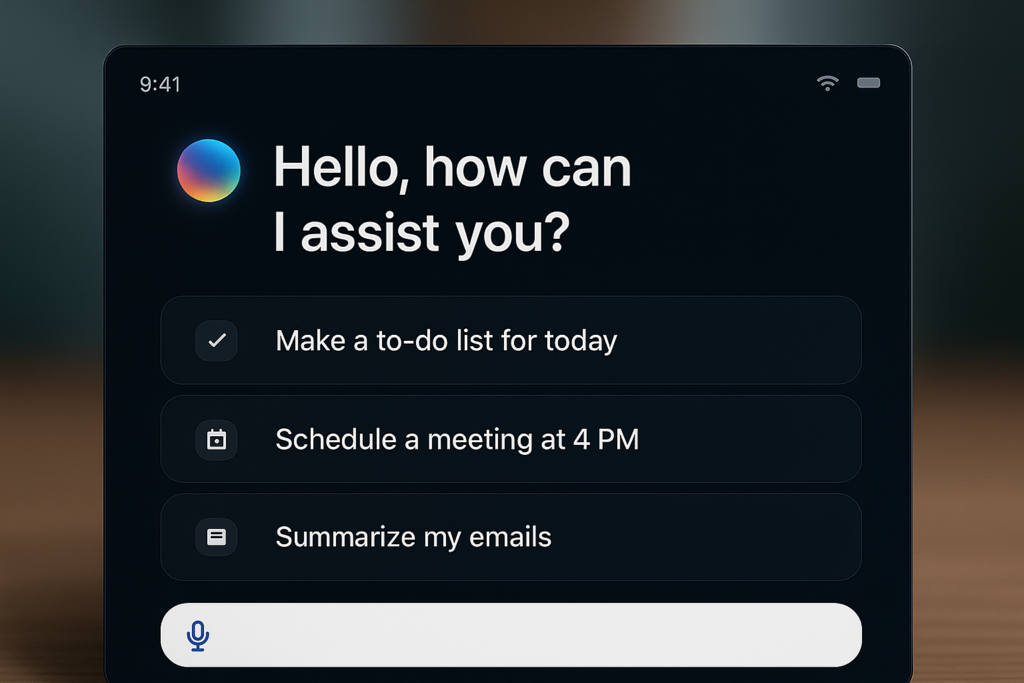
Smart Home Ecosystems with Matter Protocol
The Matter protocol—a universal standard for smart home devices—has revolutionized how we interact with our living spaces in 2025. No more worrying about whether your smart bulbs work with Apple HomeKit or if your security system is compatible with Google Assistant. With Matter, brands like Apple, Google, Amazon, and Samsung finally play nicely together, creating a single, unified smart home experience.
🛋️ Benefit: Adjust your thermostat, dim the lights, start the dishwasher, and lock your doors—all from one app or voice assistant, regardless of brand.
This change isn’t just about convenience—it’s about reliability and security. Devices built on Matter connect more quickly, suffer fewer glitches, and use local control instead of relying on cloud services, which means faster response times and better privacy. That translates into fewer dropped commands, smoother automation, and greater peace of mind for users. Imagine lights automatically dimming when you start a movie, or your robot vacuum beginning its run the moment you leave the house—all without needing to switch apps or devices.
Even better, Matter makes expanding your smart home simpler and more affordable. As more manufacturers adopt the protocol, consumers benefit from increased choice and price competition. Whether you’re a tech-savvy homeowner or just starting with a few smart plugs, the Matter ecosystem ensures your home will stay future-proof and interoperable in the years ahead.
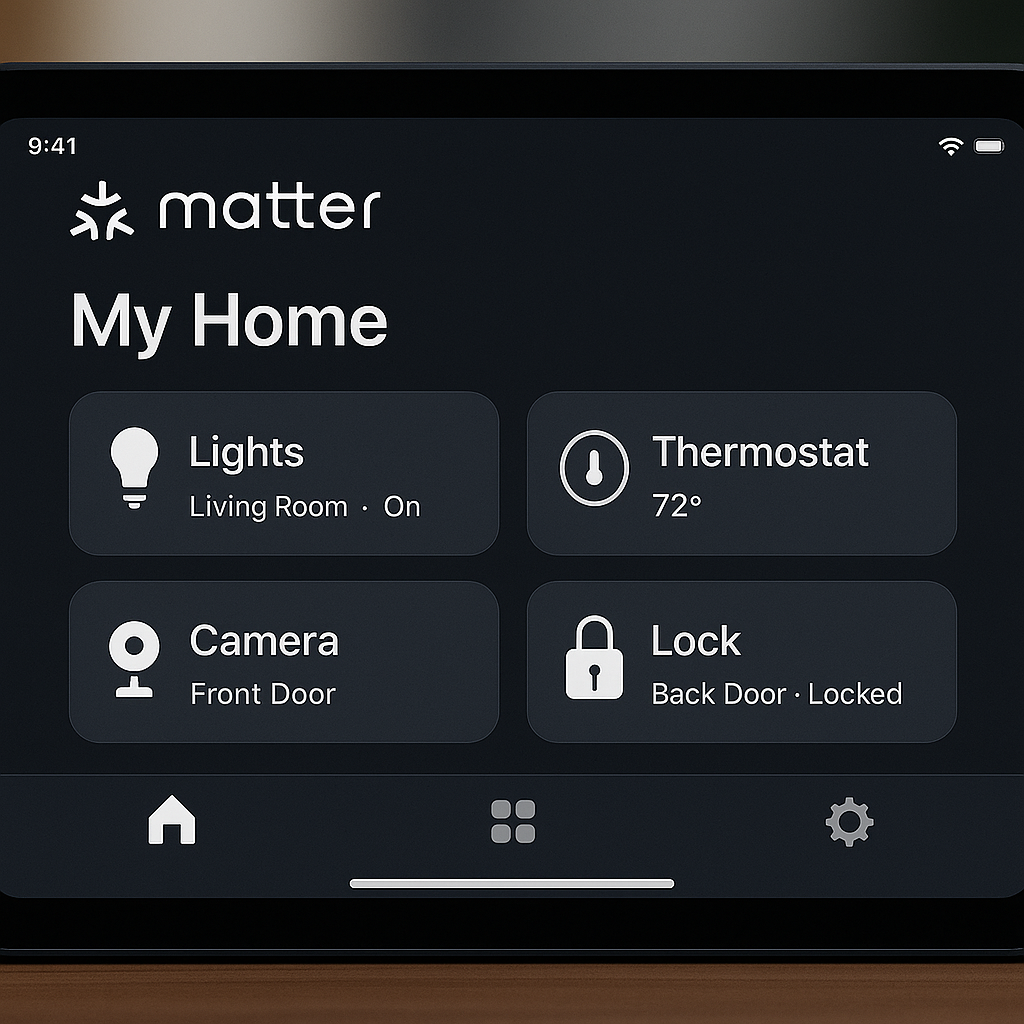
Augmented Reality Shopping
Gone are the days of second-guessing online purchases. In 2025, augmented reality (AR) shopping has become a standard feature across leading e-commerce platforms. With apps like IKEA Studio, Shopify AR, and Amazon View in Your Room, consumers can now place digital versions of products directly into their physical environment using just their phone or tablet. Whether it’s a new couch, a pair of sneakers, or even makeup, AR allows you to visualize items in real-time before buying.
💡 Why It Matters: Reduces returns, improves buyer confidence, and completely transforms the way we shop online.
This innovation is especially powerful for home décor, fashion, and cosmetics. For example, you can now “try on” clothes using your smartphone’s camera or preview a lamp on your nightstand without lifting a finger. Retailers benefit too—AR shoppers are more likely to complete a purchase and far less likely to request returns. Brands are also using AR to create interactive in-store experiences, blending physical and digital retail in ways that increase engagement and brand loyalty.
Even small businesses are jumping on board thanks to platforms like Zakeke and Adobe Aero, which make AR tools more accessible than ever. With AR, the shopping experience is no longer just about browsing—it’s immersive, intuitive, and tailored to your environment. As mobile hardware and 5G connectivity improve, expect AR to become as common in online shopping as product photos and reviews.
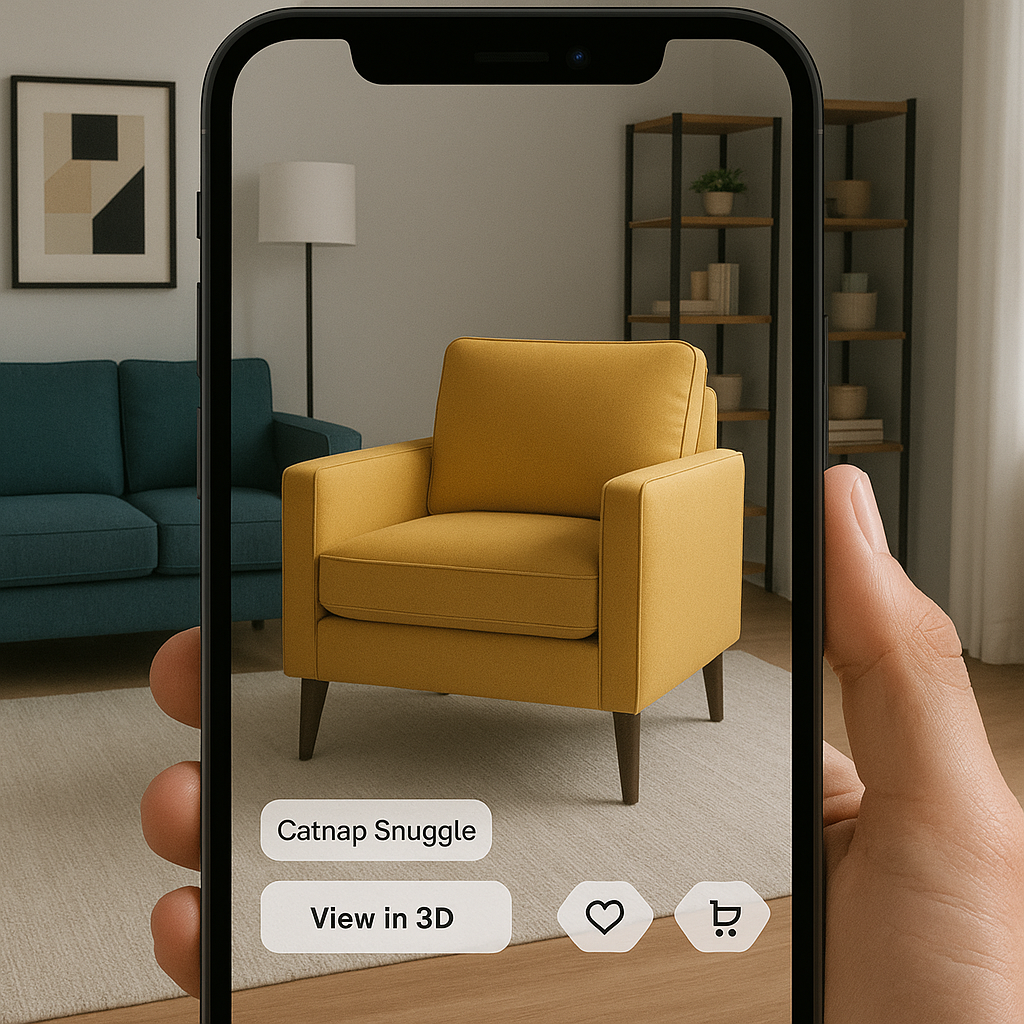
AI Health Monitors & Predictive Diagnostics
Health technology has taken a giant leap forward in 2025, thanks to AI-powered health monitors that go far beyond tracking steps or heart rate. Modern wearables like the Apple Watch Series 10, Whoop 5.0, and Withings ScanWatch 2 can now measure blood glucose, detect early signs of heart arrhythmia, track stress via cortisol levels, and even analyze hydration in real-time. But what truly sets them apart is their predictive AI diagnostics—tools that can alert you and your doctor before a health issue becomes serious.
❤️ Daily Use: Your wearable identifies early signs of high blood pressure and automatically schedules a checkup—before you even feel unwell.
This proactive approach is revolutionizing preventive healthcare. Rather than reacting to symptoms, AI-driven devices learn your body’s baseline over time and flag deviations instantly. Athletes optimize performance, patients with chronic conditions receive better real-time monitoring, and everyday users gain peace of mind through continuous feedback. It’s like having a personal physician on your wrist—one that never sleeps and constantly analyzes your well-being.
Healthcare providers are also benefiting. With patient permission, these devices share health metrics with clinics and specialists, reducing diagnostic delays and enhancing care precision. Insurance companies are even beginning to offer discounts for users who wear and regularly sync these AI devices. In essence, the fusion of wearable tech and AI is making healthcare more accessible, affordable, and personalized than ever before.
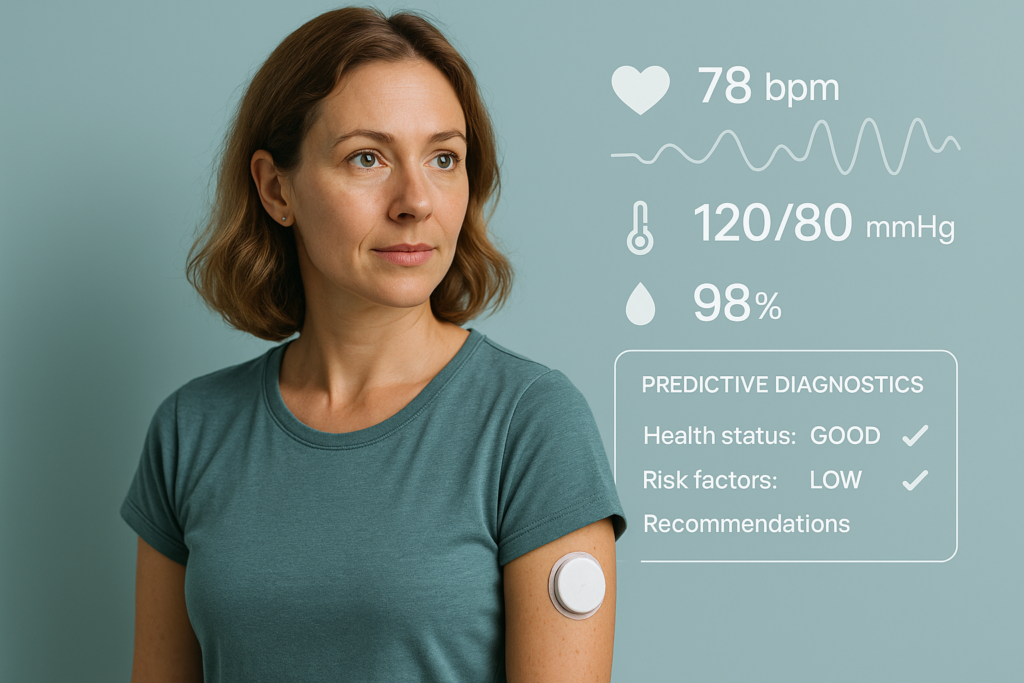
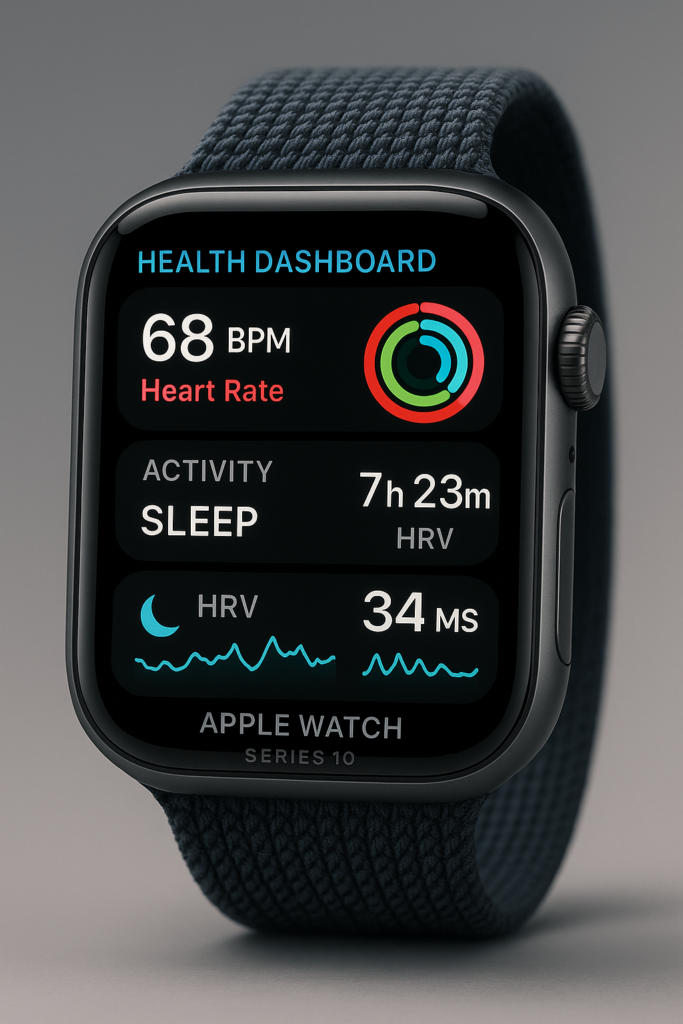
Autonomous Delivery Robots
Say goodbye to waiting for a delivery driver or wondering where your package is. In 2025, autonomous delivery robots have become a familiar sight in urban neighbourhoods and college campuses. Companies like Nuro, Starship Technologies, and Amazon Scout are leading the charge, deploying fleets of small, self-driving robots that deliver everything from groceries and takeout to medicine and online orders—right to your doorstep.
🛵 Efficiency: Orders arrive faster, with lower environmental impact and no human delay—even during peak hours.
These robots are equipped with sophisticated AI, GPS, LIDAR, and obstacle-avoidance systems, enabling them to navigate sidewalks, crosswalks, and even elevators with surprising accuracy. They travel on predefined routes, notify you via the app when they’re close, and require a secure code or face scan for item retrieval—keeping your goods safe and your delivery experience contact-free.
What’s more, these autonomous couriers offer cost-saving advantages for businesses and eco-conscious consumers alike. They reduce labour expenses, limit fuel usage, and cut down traffic congestion. In rural or underserved areas, drone versions of these delivery bots are helping bridge the gap in access to essentials. Over the next few years, expect cities to expand infrastructure—like robot lanes and smart crosswalks—to accommodate this fast-growing innovation.
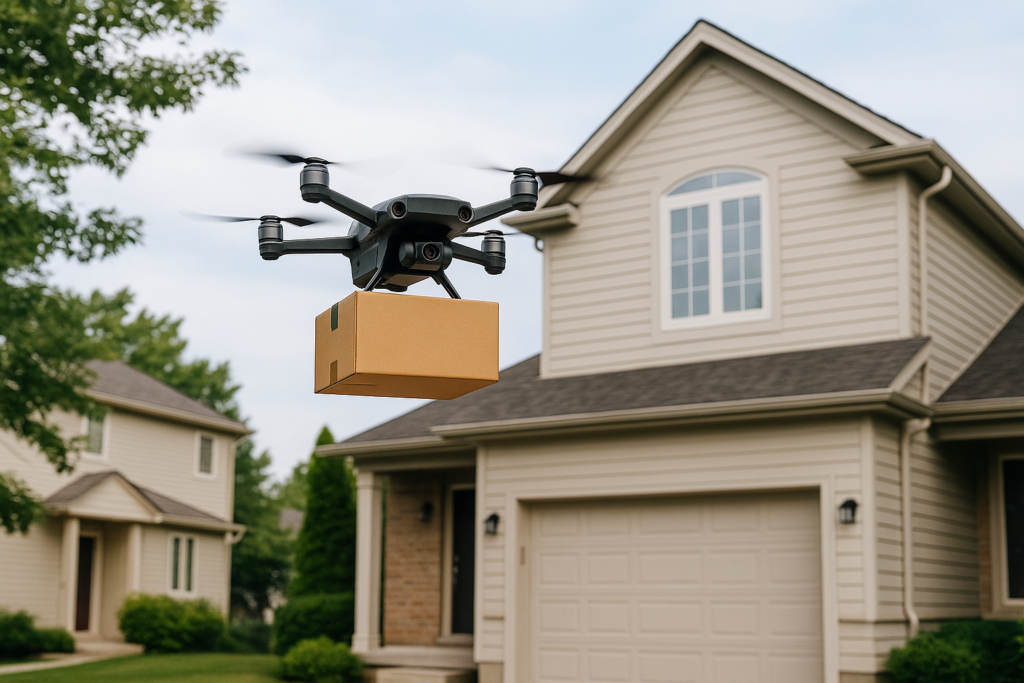
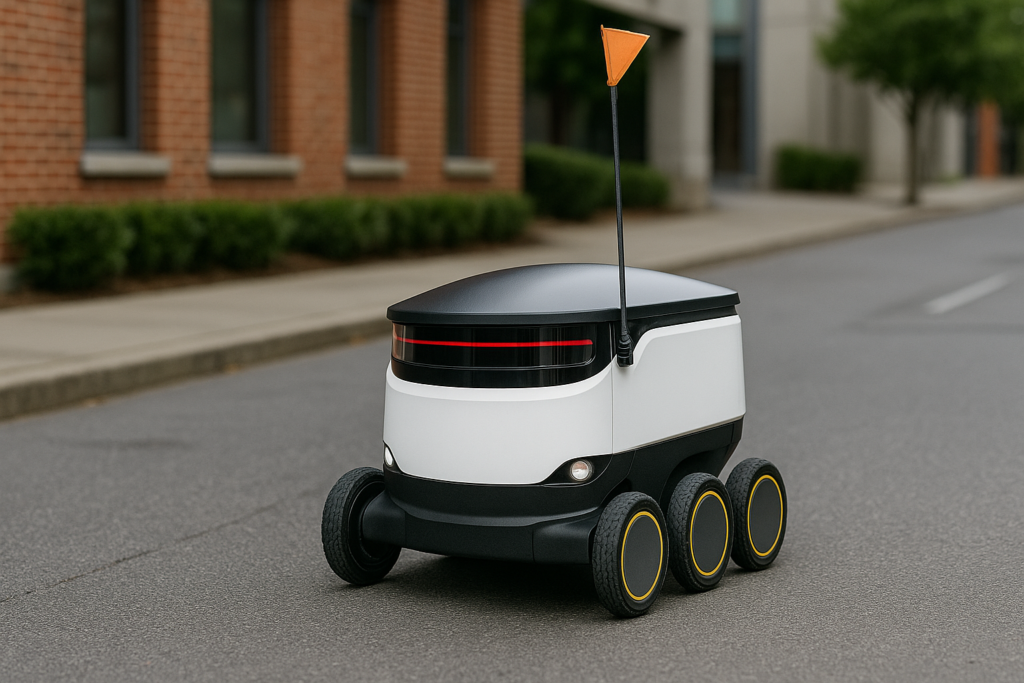
Brain-Computer Interfaces (BCIs)
Once the stuff of science fiction, brain-computer interfaces (BCIs) are now entering real-world applications in 2025. Pioneered by companies like Neuralink, Synchron, and Blackrock Neurotech, BCIs allow users to control digital devices using only their thoughts. These systems use tiny sensors implanted in or placed near the brain to interpret neural signals, translating them into commands for a computer, smartphone, or smart home device.
✨ Future Glimpse: Imagine browsing Netflix, writing a message, or controlling a drone—just by thinking.
In their current stage, BCIs are making a life-changing impact for people with physical disabilities, allowing them to regain communication, mobility, and autonomy. But the potential goes far beyond assistive tech. Developers are now working on non-invasive or wearable BCI headsets aimed at the general public, which could revolutionize productivity, gaming, and even education. Think of mind-powered typing, immersive VR experiences controlled by emotion, or fatigue monitoring that adapts your work schedule in real-time.
Despite the early stage of widespread consumer use, the ethical and safety frameworks are rapidly maturing alongside the tech. As hardware shrinks and interfaces become more user-friendly, we may soon be entering a post-keyboard world—where thinking becomes the primary interface for digital interaction.
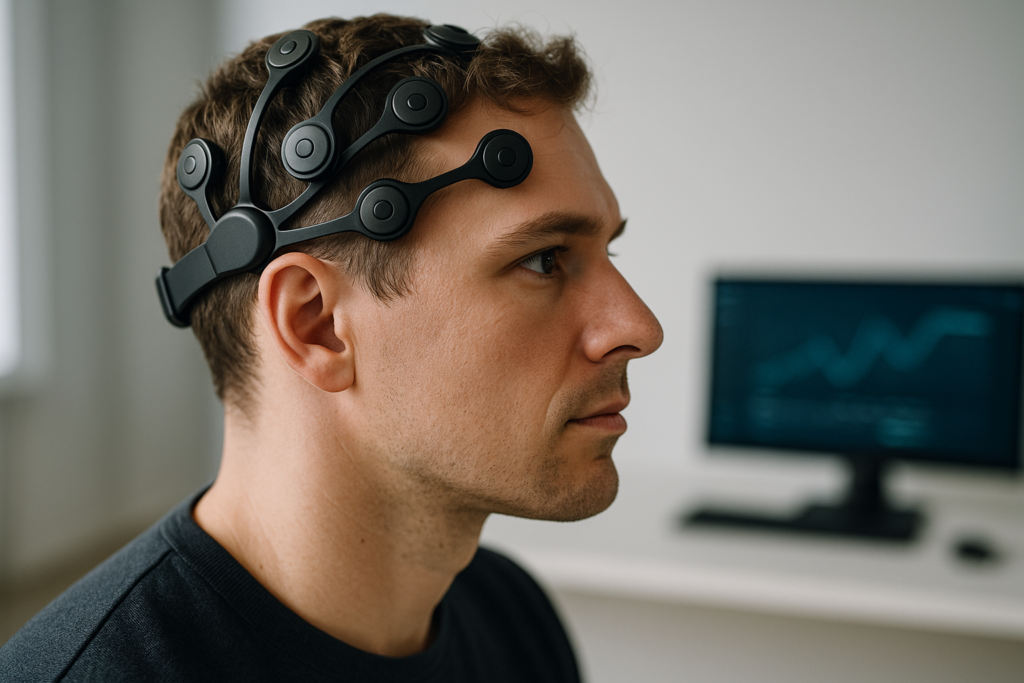
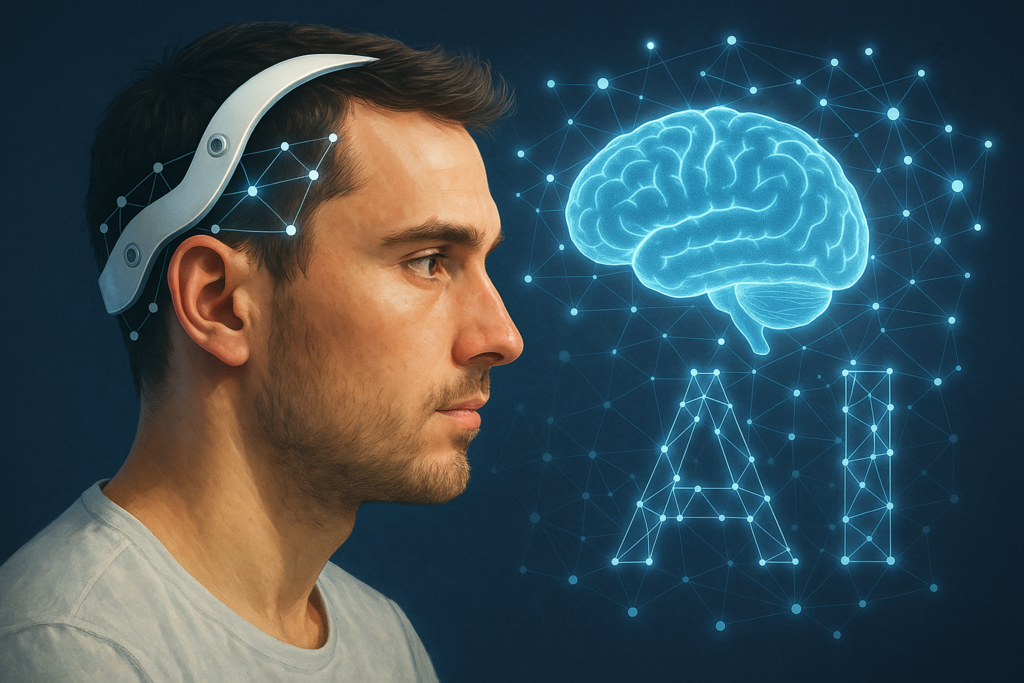
Clean Energy Home Solutions
In 2025, clean energy isn’t just an environmental trend—it’s a smart lifestyle upgrade. With the rise of smart solar panels, Tesla Powerwalls, Smartflower and intelligent thermostats from companies like Nest and Ecobee, homeowners can now generate, store, and optimize their energy consumption with remarkable precision. These systems don’t just power your home—they learn from your habits and usage patterns to help you save money, reduce waste, and even sell excess energy back to the grid.
🌍 Environmental Bonus: You’ll save money and reduce your carbon footprint—all while increasing your home’s resale value.
What makes today’s systems revolutionary is their integration with AI and IoT ( Internet of Things ) . These technologies monitor your energy usage in real-time and make automatic adjustments based on your behaviour, weather forecasts, and even electricity market prices. For example, during peak sunlight hours, your home can prioritize charging batteries, running energy-intensive appliances, and sharing energy with the grid for credits. At night, it switches to stored power, cutting down your utility bills.
More than ever, local governments and energy providers are supporting this shift with rebates, tax incentives, and financing options, making clean energy more accessible to the average homeowner. As climate concerns grow and utility costs rise, clean energy home solutions are no longer a luxury—they’re becoming essential, empowering individuals to take control of both their environmental impact and financial future.
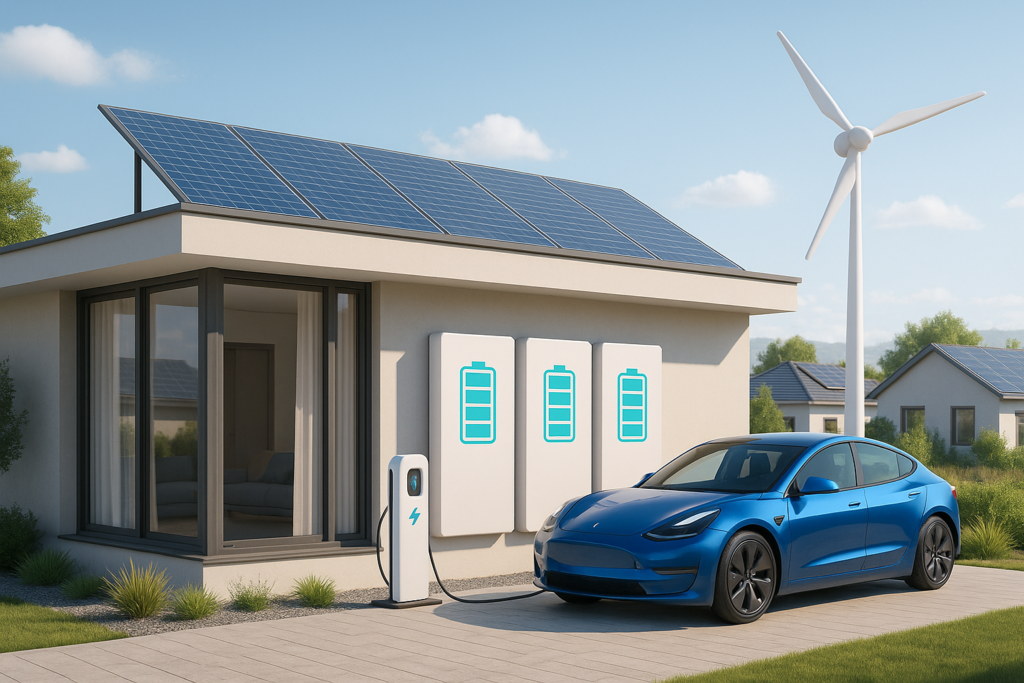
Wearable AI Companions
2025 has introduced a new class of personal tech: wearable AI companions. Devices like the Cosmos by HP, Limitless (Rewind Pendant), and Tab AI Assistant go far beyond fitness tracking. These smart, discreet gadgets act as voice-first assistants that you can clip to your clothing or wear around your neck, offering real-time support throughout the day. Whether you need to dictate notes, translate a conversation, or recall something you said last week, these devices are always listening (ethically and securely) and ready to assist.
👔 Real-World Use: Instantly translate a foreign language while travelling, summarize your last meeting, or record creative ideas on the fly.
What sets wearable AI apart is its ambient intelligence—it’s context-aware, constantly learning from your behaviour and environment to improve over time. Unlike traditional assistants locked to your phone, these devices are designed to keep your hands and eyes free, providing value through voice, gesture, or subtle touch. They’re ideal for busy professionals, students, or anyone who wants a seamless digital layer to their life without being glued to a screen.
With increasing emphasis on data privacy, many of these tools store information locally or allow users to control what’s saved and shared. As voice technology becomes more refined and battery life improves, wearable AI is rapidly transitioning from novelty to necessity—redefining productivity, communication, and how we interact with information in real-time.

Voice-Controlled Everything
Voice control has moved far beyond “Hey Siri”, “OK Google” or “Alexa” In 2025, voice is becoming the default interface for everything from kitchen appliances and entertainment systems to cars and productivity tools. Thanks to advances in natural language processing (NLP) and on-device AI, you can now operate complex systems—like managing your email inbox, adjusting oven temperatures, or even editing documents—using just your voice, with stunning accuracy and responsiveness.
🏠 No more switches or remotes: Just say it, and it happens.
This hands-free revolution is especially impactful in busy or multitasking environments. Imagine walking into your home with full hands and telling your assistant to “turn on the lights, lower the shades, and start the coffee machine”—and watching it all happen instantly. New voice-controlled operating systems like Amazon’s AlexaOS, Apple’s Voice Shortcuts, and Samsung’s Bixby 3.0 are now deeply integrated with everyday devices and cloud workflows, making voice not just a convenience, but a powerful productivity tool.
What’s more, the tech is becoming increasingly multilingual and context-aware. Whether you’re speaking in French, Spanish, or switching between languages mid-command, these systems can follow along and respond naturally. As privacy concerns rise, many companies have moved to local voice processing, meaning your requests are handled on-device without sending sensitive data to the cloud. This makes voice control faster, safer, and more appealing than ever for home, work, and on-the-go use.
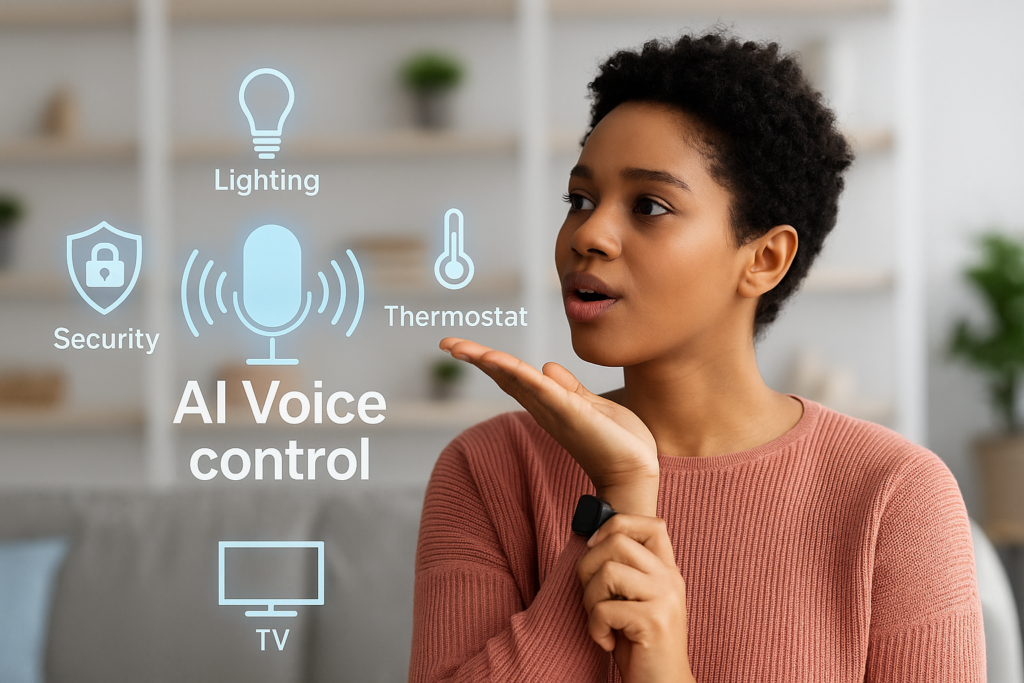
Quantum-Enhanced Cybersecurity
As quantum computing edges closer to practical application, cybersecurity is undergoing a radical transformation in 2025. Quantum-enhanced cybersecurity—particularly post-quantum cryptography (PQC)—is being implemented across banks, healthcare systems, cloud platforms, and even personal apps to guard against future threats. These new encryption standards are designed to withstand attacks from quantum computers, which could potentially break traditional cryptographic methods in seconds.
🔒 Why Now? Hackers are already using AI—quantum-resistant protocols are our next line of defence.
What makes this shift so significant is that it’s not just theoretical anymore. Tech giants like Google, IBM, and Cloudflare have already begun integrating PQC into real-world infrastructure. Meanwhile, startups are building decentralized encryption layers powered by quantum key distribution (QKD), ensuring that sensitive data—from your health records to your cryptocurrency wallet—remains protected, even in a post-quantum future.
For the average user, these upgrades will mostly happen in the background—but the benefits are huge. You’ll be using email, banking apps, or connected devices with far greater security and resilience, without changing your behavior. In short, quantum cyber security is the invisible armor of the future, shielding everyday digital life from threats we can’t yet see—but are actively preparing for.
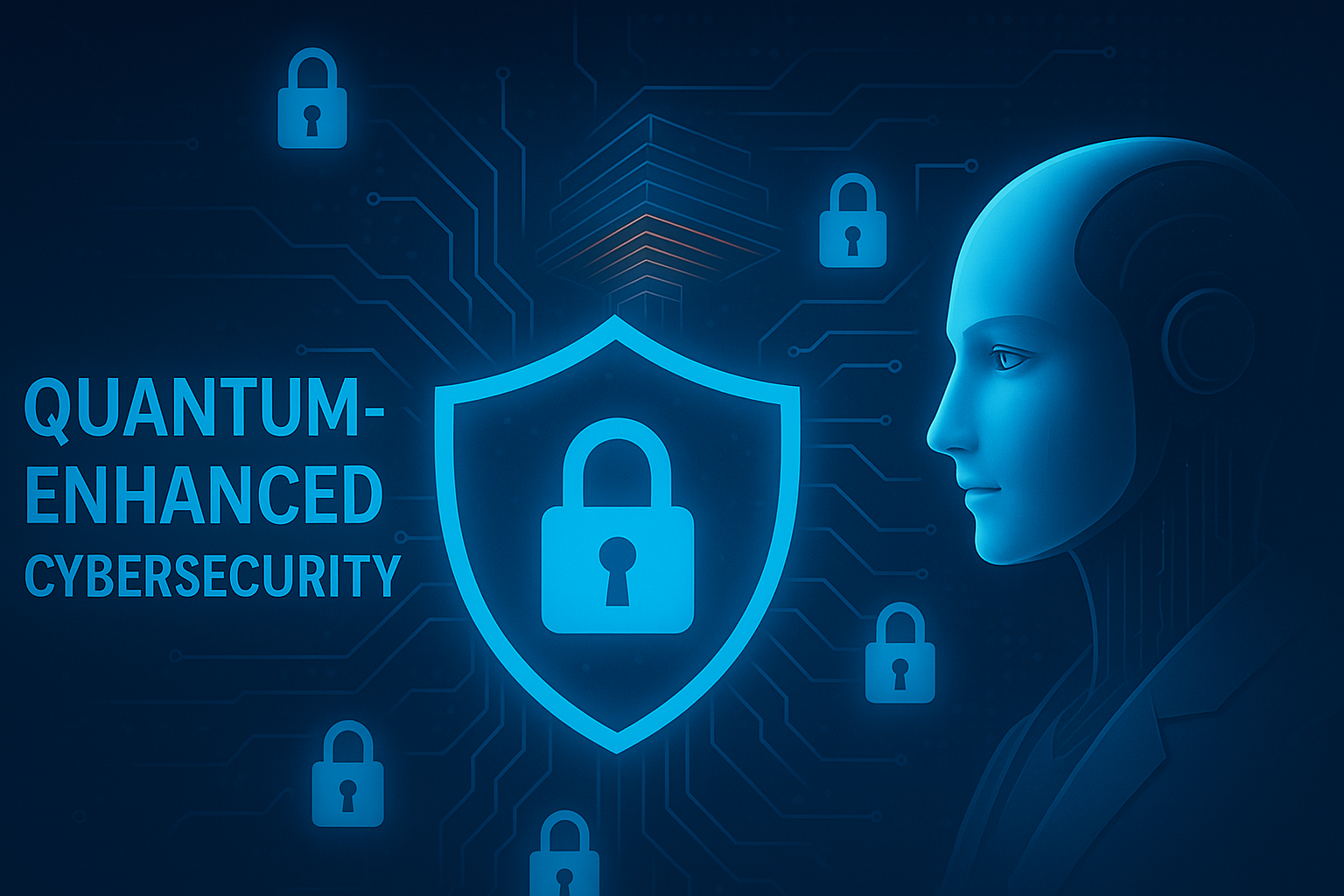
What This Means for Your Daily Life
The world of 2025 is one where technology no longer waits for you to catch up—it meets you where you are, often anticipating your next move. These ten innovations are more than just trends—they represent a shift toward a smarter, more connected, and more intuitive way of living. Whether it’s an AI assistant managing your day, a wearable catching health issues before they emerge, or a delivery robot rolling up to your doorstep, these tools are becoming the new normal.
But here’s what’s truly exciting: you don’t need to be a tech expert or spend a fortune to participate in this transformation. Many of these innovations are already accessible, user-friendly, and designed with everyday life in mind. They’re empowering people to take control of their health, time, energy, and privacy. And as adoption grows, these tools will become more affordable, better integrated, and even more essential.
So the question isn’t whether you’ll use these innovations—but which one you’ll adopt first. By embracing the future now, you position yourself to benefit from smarter living, deeper productivity, and a lifestyle that adapts to your needs—not the other way around. The future isn’t waiting. It’s already knocking at your door—possibly delivered by a robot.
Comparison Table of the 10 Innovations
With so many groundbreaking technologies emerging in 2025, it can be hard to determine which ones are worth your attention (and investment). This table breaks down the core features, real-life applications, accessibility, trans formative impact, and estimated costs of each innovation. Use it to compare options and decide which innovations are most relevant to your daily life or business.
| Innovation | Daily Use Example | Accessibility | Transformative Power | Estimated Cost |
|---|---|---|---|---|
| AI Assistants 2.0 | Manages tasks, schedules, and emails | High | ★★★★★ | $0–$20/month |
| Smart Home (Matter) | Unified app controls all home devices | High | ★★★★☆ | Varies (by device) |
| AR Shopping | Try furniture/clothes via your phone | Medium | ★★★★☆ | $0–$10/month |
| AI Health Monitoring | Detects illness early through wearables | High | ★★★★★ | $300–$500 device |
| Autonomous Delivery Robots | Delivers groceries or takeout | Medium | ★★★★☆ | $0 (included in fee) |
| Brain-Computer Interfaces | Control devices via thoughts | Low (for now) | ★★★★★ | $$$$ (early-stage) |
| Clean Energy Home | Optimizes solar usage and battery backup | Medium | ★★★★☆ | $$$$ (setup cost) |
| Wearable AI Companions | Voice-based notes, translation, recall | Medium | ★★★★☆ | $699+ |
| Voice-Controlled Everything | Operates home/devices via voice only | High | ★★★★☆ | Device-dependent |
| Quantum Cybersecurity | Future-proof encryption in your apps | Invisible | ★★★★★ | Included in services |
📝 How to Use This Table:
- Looking to improve productivity? Start with AI Assistants 2.0 or Wearable AI Companions.
- Concerned about energy or health? Invest in Clean Energy Solutions and AI Health Monitoring.
- Tech curious? Try AR Shopping or Smart Home integration—they’re low-risk, high-reward.
- Security-minded? Rest easy knowing Quantum Cyber security is becoming the default across major platforms.
These innovations aren’t just futuristic—they’re practical, available now, and already changing how we live.
❓ Frequently Asked Questions (FAQ)
Q1: Are these technologies only for tech-savvy users?
Not at all. Most of these innovations are designed with user-friendliness in mind. Whether you’re using a smart thermostat or an AI health tracker, the setup is typically plug-and-play, with intuitive apps and step-by-step guides. Companies are prioritizing accessibility to ensure adoption by the general public—not just tech enthusiasts.
Q2: Which innovation offers the fastest return on investment?
That depends on your priorities, but AI-powered assistants, smart home systems, and AI health wearables tend to offer immediate, measurable benefits. They save time, improve efficiency, and can even reduce medical expenses through early diagnostics—making them smart long-term investments.
Q3: How secure are these innovations with regard to privacy?
Security varies by company, but many tools now emphasize local data processing, end-to-end encryption, and user control over data sharing. For instance, wearable AI companions often store conversations locally and allow users to delete or export data on demand. Quantum-enhanced cybersecurity is also raising the bar industry-wide.
Q4: Will these technologies become cheaper over time?
Absolutely. As adoption scales and competition increases, prices tend to drop. What was once premium (like wearable AI or solar batteries) is now more affordable. Additionally, many governments offer tax incentives or rebates for clean energy and health-focused technologies.
Q5: How soon will Brain-Computer Interfaces be mainstream?
BCIs are currently in their early adopter phase, primarily benefiting people with physical impairments. However, non-invasive consumer versions are being developed and tested, with experts predicting mainstream availability within 5–7 years. They’re likely to follow the same trajectory as smartwatches—starting niche, then going mass-market.
Q6: Can these technologies be integrated together?
Yes—and integration is improving rapidly. Many AI assistants can now control smart homes, sync with health apps, and even trigger automation across platforms like Google, Apple, and Amazon via Matter or IFTTT (If This Then That). Expect even tighter cross-device compatibility in the near future.
Q7: What if I live in a rural or under-connected area?
Many innovations—including offline AI assistants, solar-powered systems, and autonomous delivery services—are being adapted specifically for rural or infrastructure-limited regions. Satellite internet (e.g., Starlink) is also bridging the digital gap, making advanced tech more universally available.

